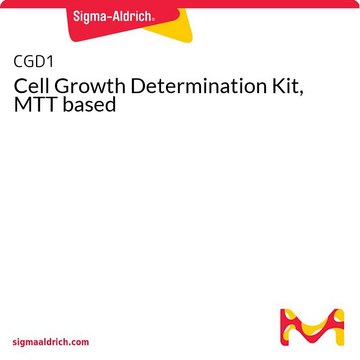1.00326
Hydrogen chloride solution
c(HCl) = 0.1 mol/l (0.1 N) in 2-propanol, DIN ISO 6618, for titration in non-aquous media, Titriplex®
Synonym(s):
Hydrogen chloride solution
About This Item
Recommended Products
Product Name
Hydrogen chloride solution, 0.1M in 2-propanol, acc. to DIN ISO 6618 part 1 c(HCl) = 0.1 mol/l (0,1 N), Titripur®
Quality Level
product line
Titripur®
form
liquid
autoignition temp.
425 °C (2-Propanol)
quality
Analyzed in our ISO 17025 accredited QC lab
expl. lim.
2-13.4 % (v/v) 2-Propanol)
reaction suitability
reaction type: Acid-base reactions
concentration
0.1 M
technique(s)
titration: suitable
pH
<0.5 (20 °C in H2O)
transition temp
flash point 12 °C (2-Propanol)
density
0.79 g/cm3 at 20 °C
storage temp.
15-25°C
Application
- A highly selective electrochemical sensor for chloramphenicol based on three-dimensional reduced graphene oxide architectures.: This study presents the development of an electrochemical sensor for detecting chloramphenicol in aqueous solutions, leveraging the properties of reduced graphene oxide. Hydrogen chloride solution plays a critical role in the preparation of the graphene oxide, which is instrumental for the sensor′s high sensitivity and selectivity (Zhang et al., 2016).
- Effects of cross-linking molecular weights in a hyaluronic acid-poly(ethylene oxide) hydrogel network on its properties.: This research explores the impact of cross-linking with varying molecular weights on the properties of a hyaluronic acid-polyethylene oxide hydrogel. The use of hydrogen chloride solution in modifying the hydrogel structure is essential for optimizing its physical characteristics for potential analytical chemistry applications (Noh et al., 2006).
- [Determination of docosahexenoic acid in human serum by capillary gas chromatography].: This paper discusses a method for the determination of docosahexenoic acid in human serum using capillary gas chromatography, where hydrogen chloride solution is used during the esterification process of fatty acids, demonstrating its utility in enhancing the precision of analytical techniques (Li et al., 1997, article in Chinese).
Features and Benefits
This volumetric solution is analyzed by our calibration laboratory D-K-15185-01-00 which is accredited according to DIN EN ISO/IEC 17025 for analysis of amount-of-substance concentrations in volumetric solutions by DAkkS (Deutsche Akkreditierungsstelle - German National Accreditation Body). The accreditation certificate can be found at www.sigmaaldrich.com/ISO17025.
Packaging
Analysis Note
Amount-of-substance concentration 0.0994 - 1.006 mol/L
Measurement uncertainty ± 0.0004 mol/L
Traceability NIST SRM
The concentration is determined by volumetric titration and refers to 20°C.
The amount-of-substance concentration of this volumetric solution is determined with standardized sodium hydroxide solution (article number 1.09141). The sodium hydroxide solution is standardized by hydrogen chloride solution (article number 1.09060) which has been standardized against volumetric standard Tris(hydroxymethyl)aminomethane (article number 1.02408).
This volumetric solution is traceable to a primary standard reference material (SRM) from the National Institute of Standards and Technology, Gaithersburg, USA (NIST SRM 723 Tris(hydroxymethyl)aminomethane) by means of volumetric standard Tris(hydroxymethyl)aminomethane (article number 1.02408), certified reference material according to ISO 17034, analyzed by our accredited calibration laboratory of Merck KGaA, Darmstadt, Germany according to DIN EN ISO/IEC 17025. The uncertainty is expressed as expanded measurement uncertainty with a coverage factor k=2 covering a confidence level of 95%.
Note: The titer is a correction factor to correct for variations of the volumetric solution, the titration equipment, the temperature and other laboratory conditions. For correct titration results it is recommended to determine a titer with the laboratory specific equipment and under laboratory specific conditions directly after opening a new bottle and at regular time intervals.
Legal Information
related product
Signal Word
Danger
Hazard Statements
Precautionary Statements
Hazard Classifications
Eye Irrit. 2 - Flam. Liq. 2 - Met. Corr. 1 - STOT SE 3
Target Organs
Central nervous system
Storage Class Code
3 - Flammable liquids
WGK
WGK 1
Flash Point(F)
53.6 °F - (2-Propanol)
Flash Point(C)
12 °C - (2-Propanol)
Certificates of Analysis (COA)
Search for Certificates of Analysis (COA) by entering the products Lot/Batch Number. Lot and Batch Numbers can be found on a product’s label following the words ‘Lot’ or ‘Batch’.
Already Own This Product?
Find documentation for the products that you have recently purchased in the Document Library.
Customers Also Viewed
Articles
SmartChemicals enable wireless transfer of CoA data stored on an RFID tag on the consumable bottle to the titrator, reducing effort and chance for human error. Crucial data required for the application is transmitted safely, reliably and intelligently to the instrument.
Our team of scientists has experience in all areas of research including Life Science, Material Science, Chemical Synthesis, Chromatography, Analytical and many others.
Contact Technical Service




